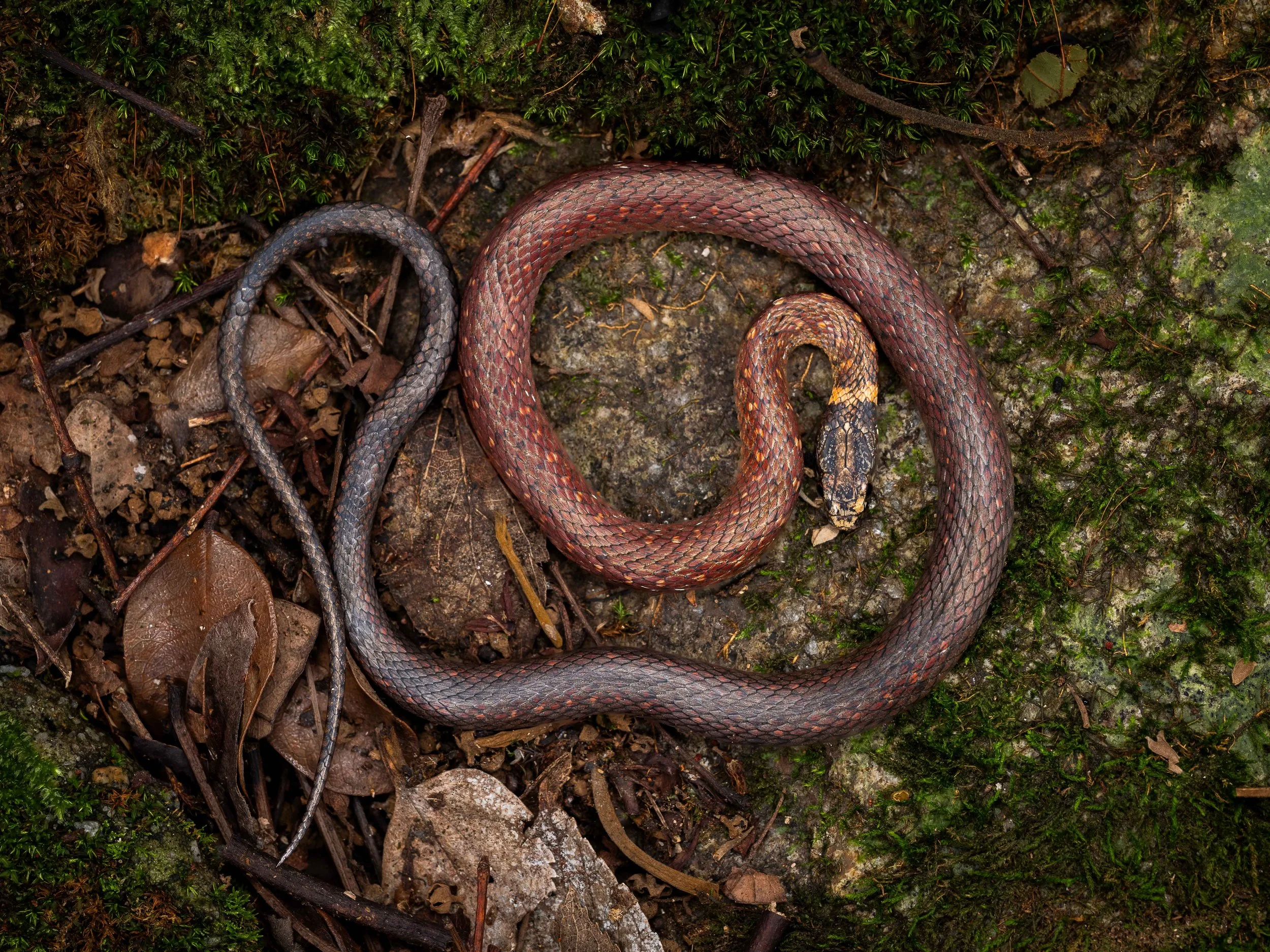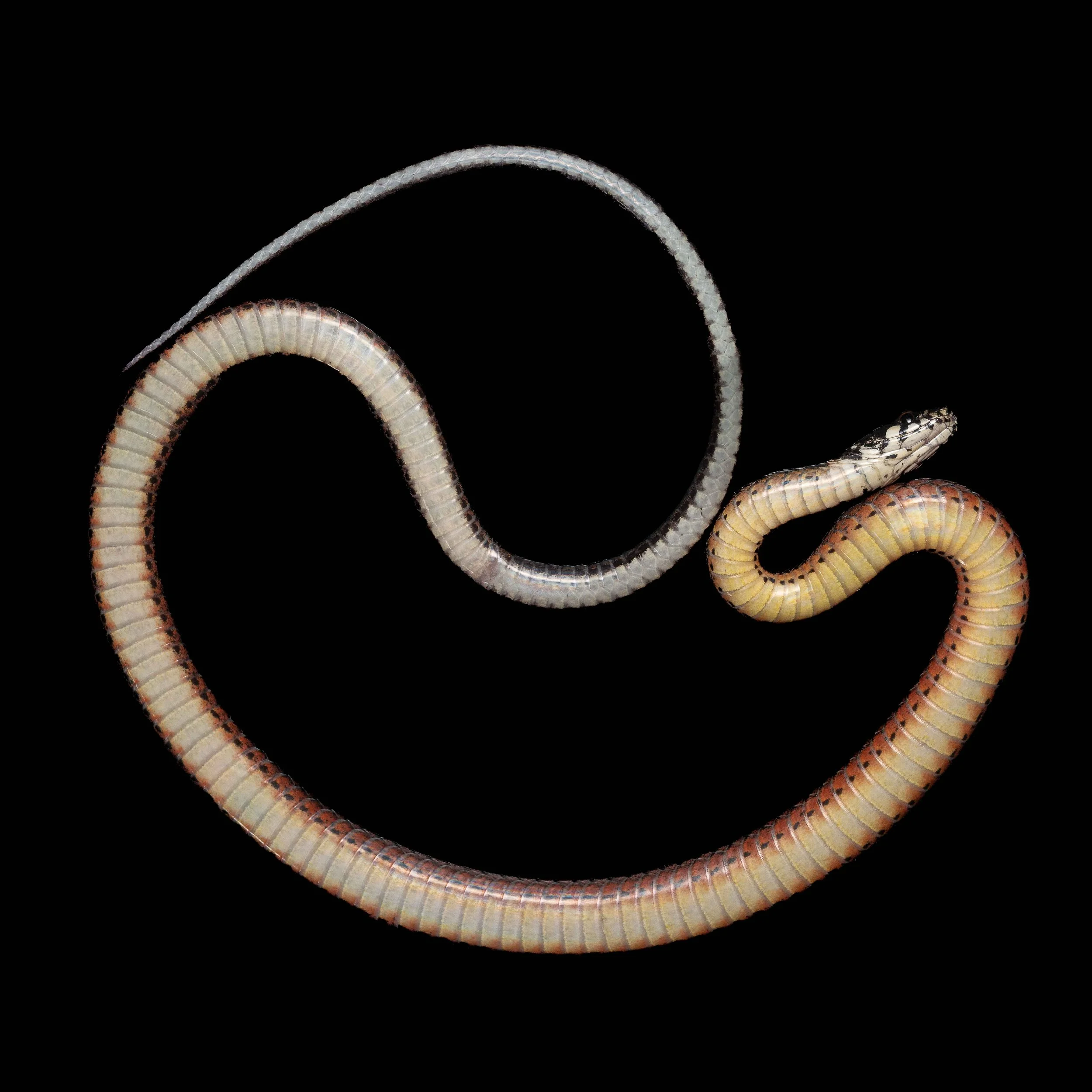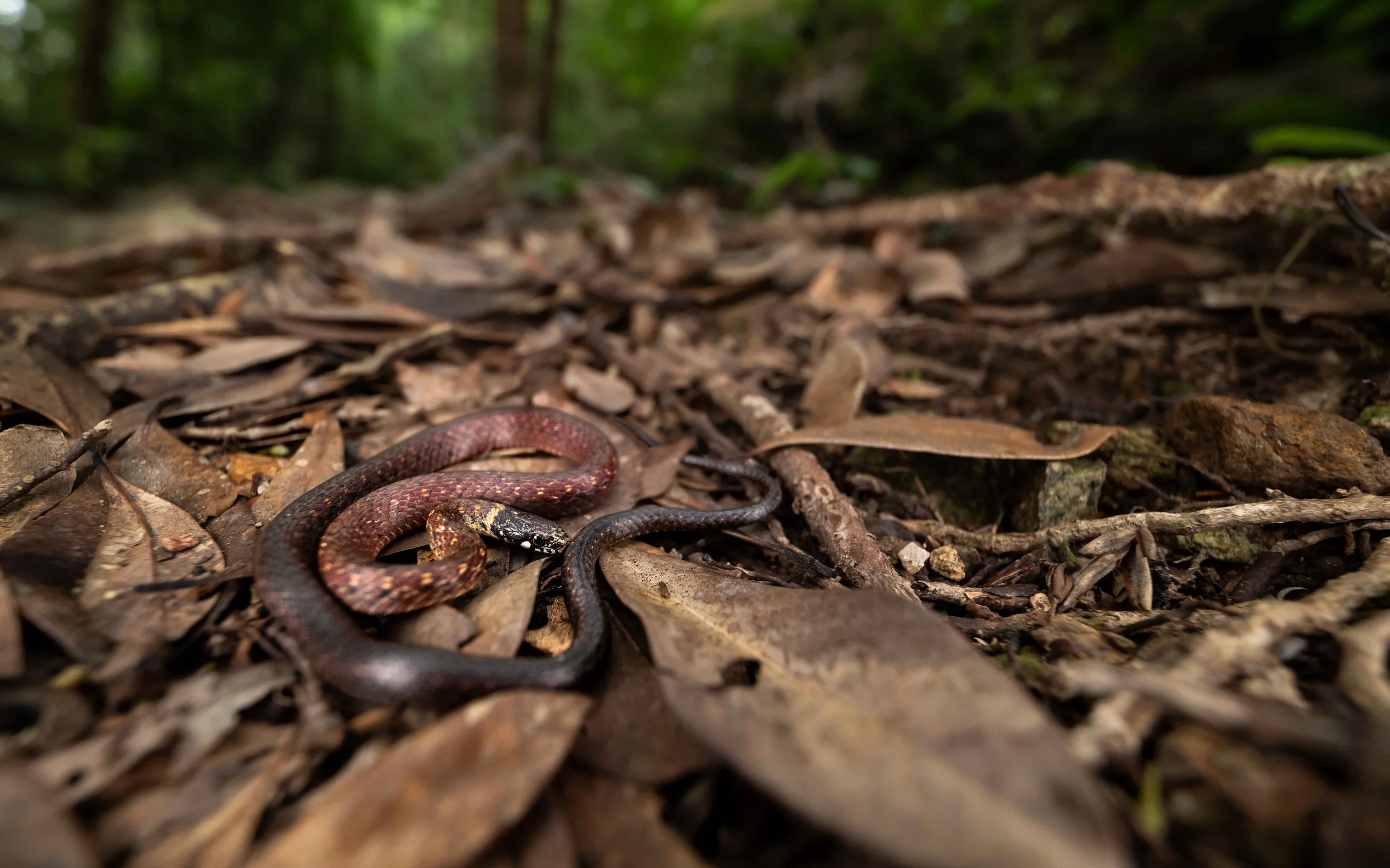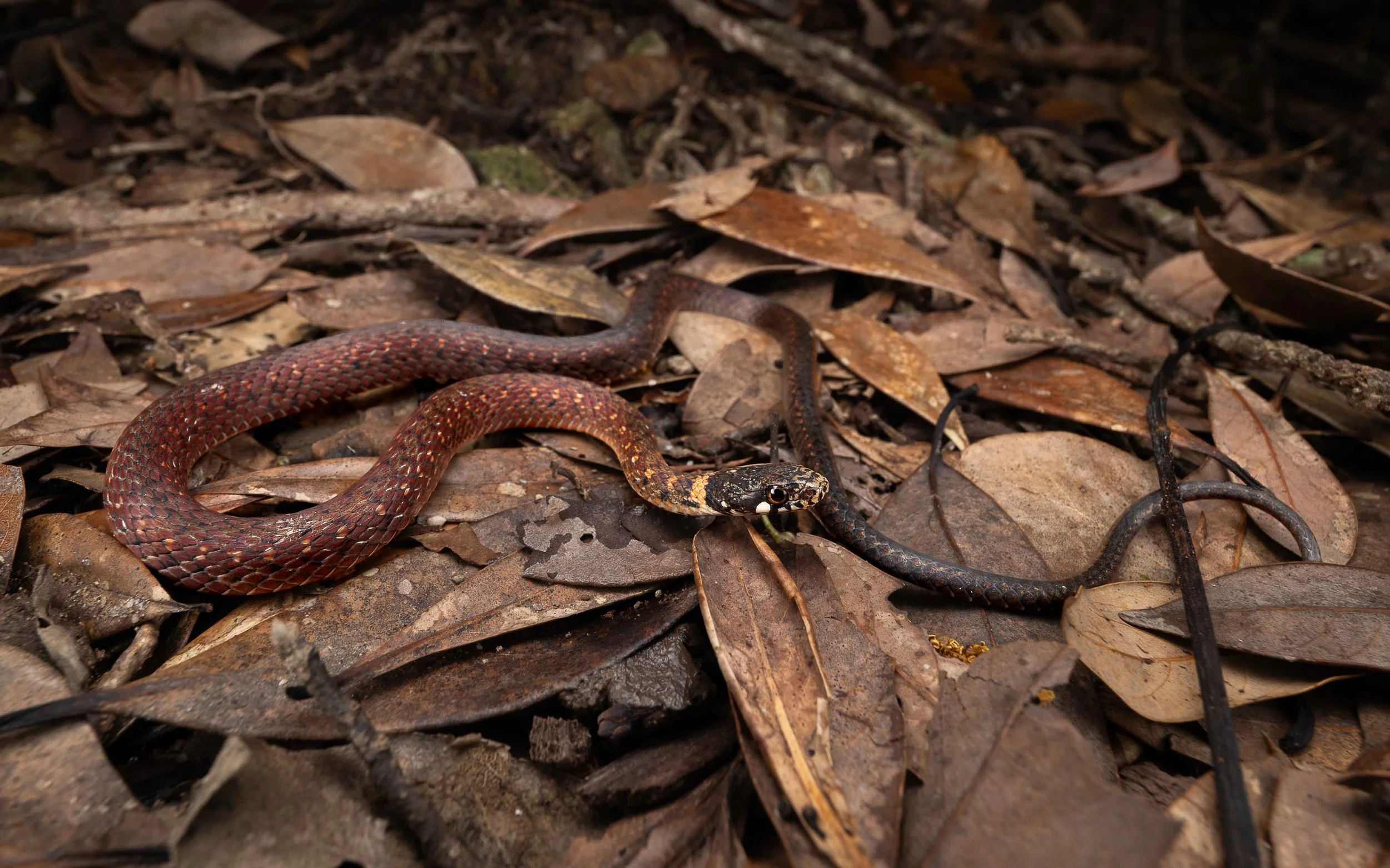SUMMARY
VENOM: Assumed None*
PREVALENCE: Very Rare
ACTIVE PERIOD: Assumed diurnal
KEY ID FEATURES: Dark grey body with faint cream color spots on upper third of body, reddish color on front third, white or yellowish collar, white spots along jaw line, very small
BEHAVIOR: Most likely sub-fossorial, probably hides in leaf litter and feeds on worms, tadpoles and small fish, not defensive
SIZE: Very small - <30cm
IUCN: DD - Data Deficient
*Not confirmed by all sources
GALLERY
IMPORTANT: Many snakes have significant variance in coloration and pattern even within the same species. There can also be extreme differences in appearance from juveniles to adults so it is important to never assume you have properly identified a snake.










DESCRIPTION
Very few specimens of the Mountain Keelback have ever been found so not much is known about color variation. All specimens collected seem to have very similar coloration based on our research which aligns with the specimen shown here. Body is a dark grey with maroon coloration on the upper third of the body. Two faint lateral rows of light colored spots run the length of the body on either side of the dorsal ridge fading out towards the tail. Black spots run the length of the body just below the light colored spots and also fade out towards the tail. Ventrals are yellow towards the head and gradually transition to a pearlescent white at the tail with black spots on either side of each ventral scale. Subcadual scales are split, anal plate divided. Eyes are proportional relative to the head with round pupils and brown iris. True to its common name dorsal scales are lightly keeled. Lower and upper jaw line show white spots on labial scales. ‘Occipital’ or head scales are large and mottled black and dark brown or cream color. The tail on one of the specimens found (a juvenile) was severed so overall length could not be determined. This specimen was found alive but died shortly after from an attack by a Many Banded Krait, and it is assumed the severed tail was the result of the predation attempt, indicating the snakes ability to perform pseudoautotmy
BEHAVIOR
Due to the rarity of the species in Hong Kong behaviors are not confirmed but it is generally agreed that the Mountain Keelback is active during the day. Its small head seems well designed for foraging in leaf litter or rocky streams in search of worms and other small prey. Feedback from an individual that kept the species in captivity stated dietary preference for tadpoles and small fish. When startled it does not display any aggressive defensive behavior aside from squirming and trying to flee. It will also wrap its tail around a predator or wiggle it in a caudal lure manner, and sometimes knots its self. The species was never observed to bite or use false strikes.
HABITAT
Found more commonly at mid to high elevations ranging from 100 to 800+ meters. Assumed to live in leaf litter and near small mountain streams. Very elusive, small and well camouflaged.
MISTAKEN IDENTITY
NO SNAKE SHOULD EVER BE HANDLED BY ANYONE BUT EXPERTS: The Mountain Keelback is a unique snake in Hong Kong that is not easily mistaken for any other endemic species, but its neutral color tones mean it could possibly be mistaken for other neutral toned snakes. Visit the 'Practical Venomous Snake ID' section of the Snake ID page for tips on identifying some of the more common venomous species.

